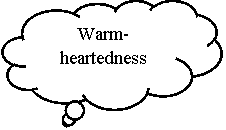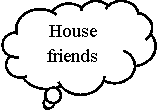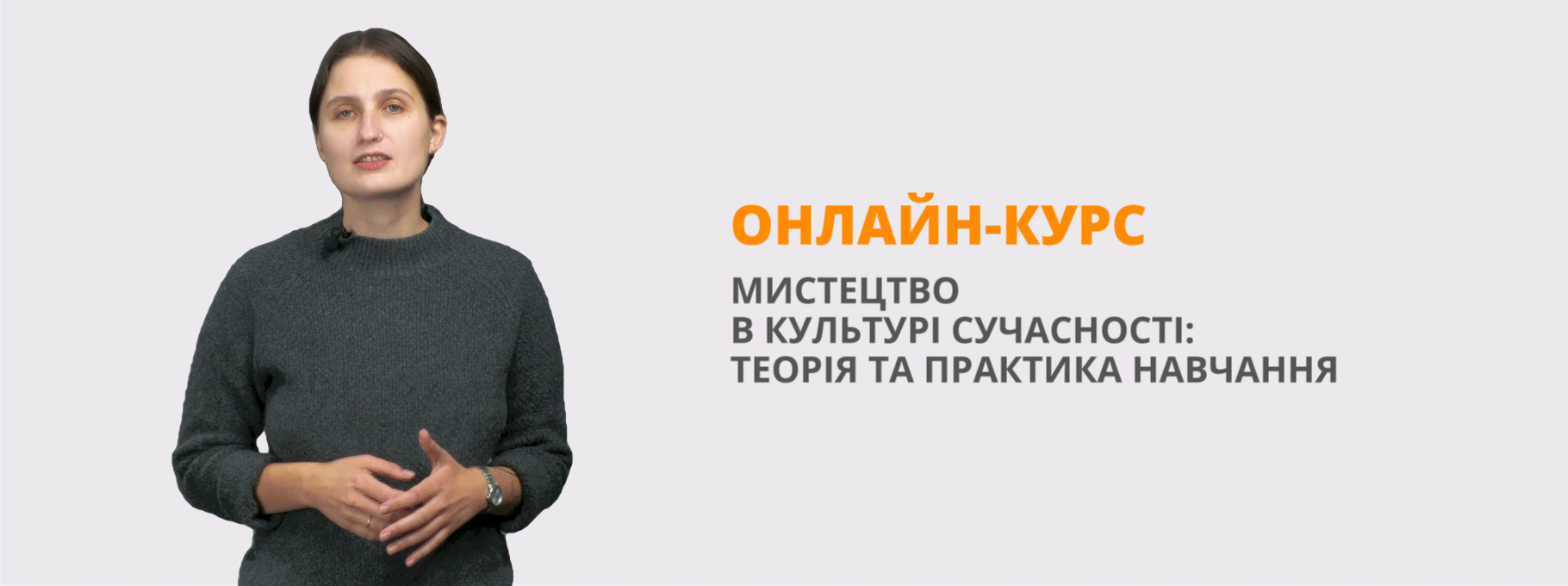Our Beautiful Motherland
Our Beautiful Motherland
Form 7
Suggested level- Pre-Intermediate
Objectives: to activate students’ speaking skills through various creative activities; to activate new vocabulary on the topic;
to develop students’ skills in reading effectively;
to teach students to communicate in groups;
to widen the students’ knowledge about their native country and its traditions;
to develop students’ creative imagination, logical thinking, memory.
Aids: the text for reading, symbols of Ukraine, students’ projects, pictures.
Procedure
- INTRODUCTION
T: Good morning! I think you are fine today and ready to speak about the country you live in, its people, customs and traditions and show your love to your Motherland.
The motto of our lesson is “East or West home is best”. Do you agree? Why?
You are right and today we are going to show everybody that Ukraine is the best place to live and the best place to visit.
Brainstorming

 T: What associations come across to your mind when you hear the word “home”? (Students fill in the mind map with the examples)
T: What associations come across to your mind when you hear the word “home”? (Students fill in the mind map with the examples)

 HOME
HOME

(Students explain their choices)
Student 1: I associate home with…
- MAIN PART OF THE LESSON
Group work
(Teacher splits the class into three groups)
T: Who considers Ukrainians to be very talented sit together. You are the first group. This is a doll which symbolizes all Ukrainian women. It’s your emblem.
T: Who thinks that Ukrainians are religious sit together. You are the second group. This is an angel who lives with God in Heaven is the emblem of your group.
T: All the rest sit together. You are the third group. This horse shoe is a sign of good luck and is the emblem of your group.
So, we have three groups. I have a task for you. Here I have got three pictures with different stereotypes which are connected with Ukrainians. The first one tells us that Ukrainians are very talented, the second shows that Ukrainians are religious and the third shows that Ukrainians are great tea-drinkers. I give all these pictures to you. Your task is to discuss them and tell us if they are true and explain you point of view.
(Each group presents their short projects explaining other groups, comparing the information and making the conclusion)
Pre-Reading Activity
T: What is the national clothes of the Ukrainians? When do they usually wear it? Do you have a vyshyvanka? Do you embroider it yourself?
Reading
Vyshyvanka: More than Fashion.
A ____ The word ‘vyshyvanka’ is quite new but the art of embroidery goes back to Scythian times. We know from old books that embroidery is one of the oldest forms of decoration. However, it isn’t as old as the art of making clothes. People
learnt to sew and knit before they started to decorate their clothes with different patterns. To do this they used needles, threads and beads.
B____ In embroidery there are certain types of stitches that people have used for centuries. They are the running stitch and the cross stitch. Some people say that in the old days people embroidered their shirts to protect themselves from evil spirits. So, they used a cross stitch to guard their necks, arms and chests.
C____ Embroidered shirts, blouses, tablecloths and towels are typical not only for Ukraine. You can find them in Hungary, Romania, Macedonia, Russia and many other countries. However, it has become more than just a traditional form of art only in Ukraine.
D____ Nowadays, it is quite fashionable to wear vyshyvankas on holidays and for special celebrations. You can find people of different ages in Ukrainian traditional shirts. Some people wear them every day and have special vyshyvankas for holidays. The vyshyvanka has become a symbol of Ukrainian national identity. Today, people decorate not only shirts but also other clothes like blouses, T-shirts, belts, dresses ties, and even swimsuits!
E____ Since 2008, there have been marches called Vyshyvanka Parades. They are usually organized on Sunday in May when the weather is already warm. You can see a lot of people dressed in different types of vyshyvankas. They go along the main streets of Ukrainian cities, sing songs and wish each other peace and happiness. They also carry the national flags of Ukraine and pictures of Taras Shevchenko, Ukraine’s national poet.
Post-Reading Activity
Read the text again and match the titles (1-5) to the paragraphs (A-E).
1.How it is made.
2. Coming into fashion.
3. One of the oldest forms of art.
4. Marches in national clothes.
5. Embroidery in other countries.
Vocabulary: Handicrafts (Reading and writing)
Read paragraphs A and B. Write the words under the correct headings.

VERBS NOUNS
|
|
|
|
|
|
|
|
|
|
|
|
|
|
|
|
|
|
|
|
|
Complete the sentences using new vocabulary.
- I’m good at making running s_______ (stitches).
- We usually d __________ our classroom before major holidays.
- In handicrafts lessons, girls learn how to s _____, k ______ and e ______ .
- My Granny taught me how to work with a n ______ and t ________ .
- She decorated her blouse with coloured b ______ .
- I don’t like the p ________ on my sweater.
ORAL PRACTICE
T: Give your brief ideas why vyshyvankas can be named one of the Ukrainians wonders.
GRAMMAR. PRESENT PERFECT. PAST SIMPLE.
 REMEMBER!
REMEMBER!

Practice in Grammar.
Put the verbs in brackets into the Present Perfect or the Past Simple.
- A: Last night I … (see) the latest James Bond film.
B: Oh, I … (already/see) it twice.
- A: Do you know that Mrs Jones … (work) here for sixteen years?
B: I thought she … (start) working here ten years ago.
- A: … (you/ever/meet) anyone famous?
B: Yes, last summer I … (sit) next to Brad Pitt on a plane to LA.
- A: How long ago … (you/start) painting?
B: Ten years ago. I … (recently/complete) a painting that the National Gallery …(ask) me to do a year ago.
- A: Do you like Chinese food?
B: Actually, I … (never/try) it.
- A: How long … (you/live) in the USA?
B: I … (come) here in 2004.
Oral Practice.
T: Complete the sentences with your own ideas concerning the issue of living in Ukraine.
- It is still difficult to live in the Ukrainian villages because …
- The Ukrainians are …
- The Ukrainians have been travelling much more often around for the last 25 years, so …
- Ukraine has chosen the European way of life because …
- More and more Ukrainians try to leave their native land because …
GAME “The Cleverest”.
Teacher reads the sentences about Ukraine . The students have to find the right answer.
- The human chain for Ukrainian independence was between … .
- Kyiv and Odessa
- Kyiv and Lviv
- Lviv and Ternopil
- Kyiv and Uzhgorod
- Ukraine officially declared its independence … .
- On August 15, 1991
- On July 24, 1991
- On August 24, 1992
- On August 24, 1991
- Over … of Ukrainian citizens voted for independence.
- 55% c) 90%
- 100% d) 70%
- The first nation to recognize Ukraine’s independence was … .
- The USA c) Russia
- Canada d) France
- The first president of independent Ukraine was … .
- Victor Yanukovych
- Victor Yushchenko
- Leonid Kravchuk
- Leonid Kuchma
- The new Constitution of Ukraine was adopted on … .
- July 28 c)August 1
- June 28 d) December 18
- The year of its adoption was … .
- 1994 c) 2004
- 1996 d) 2010
- Summarising.
T: Thank you very much for your nice work. Now imagine that you have a real microphone. Your task is to tell what you have learnt at our English lesson.(Students tell in turns)
You know a lot of interesting information about Ukraine and I’m sure you really love your country.
Now I want to address you with this beautiful poem:
Love your dear Motherland,
Love it with your whole heart,
Love Ukraine when the days are happy,
Love when the days are dark.
Cherish your mother tongue,
Cherish your family roots,
Never stop thinking of your parents
And make their lives good.
Hometask
Your hometask is to tell about vyshyvankas to your pen friend in Britain.
Бібліографія:
- J.Quintana “Family and Friends 6” (Oxford)
- A.Chebotaryov “Across Ukraine 2” (Pearson Central Europe)
- V.Evans, L.Kalinina, I.Samoilyukevych “Click on. Ukraine”. (Express Publishing 2006)
- V.Evans, J.Dooley “New Round-Up 4” (Pearson Education Limited 2010)
- The newspaper “English” №23 December 2015


про публікацію авторської розробки
Додати розробку
